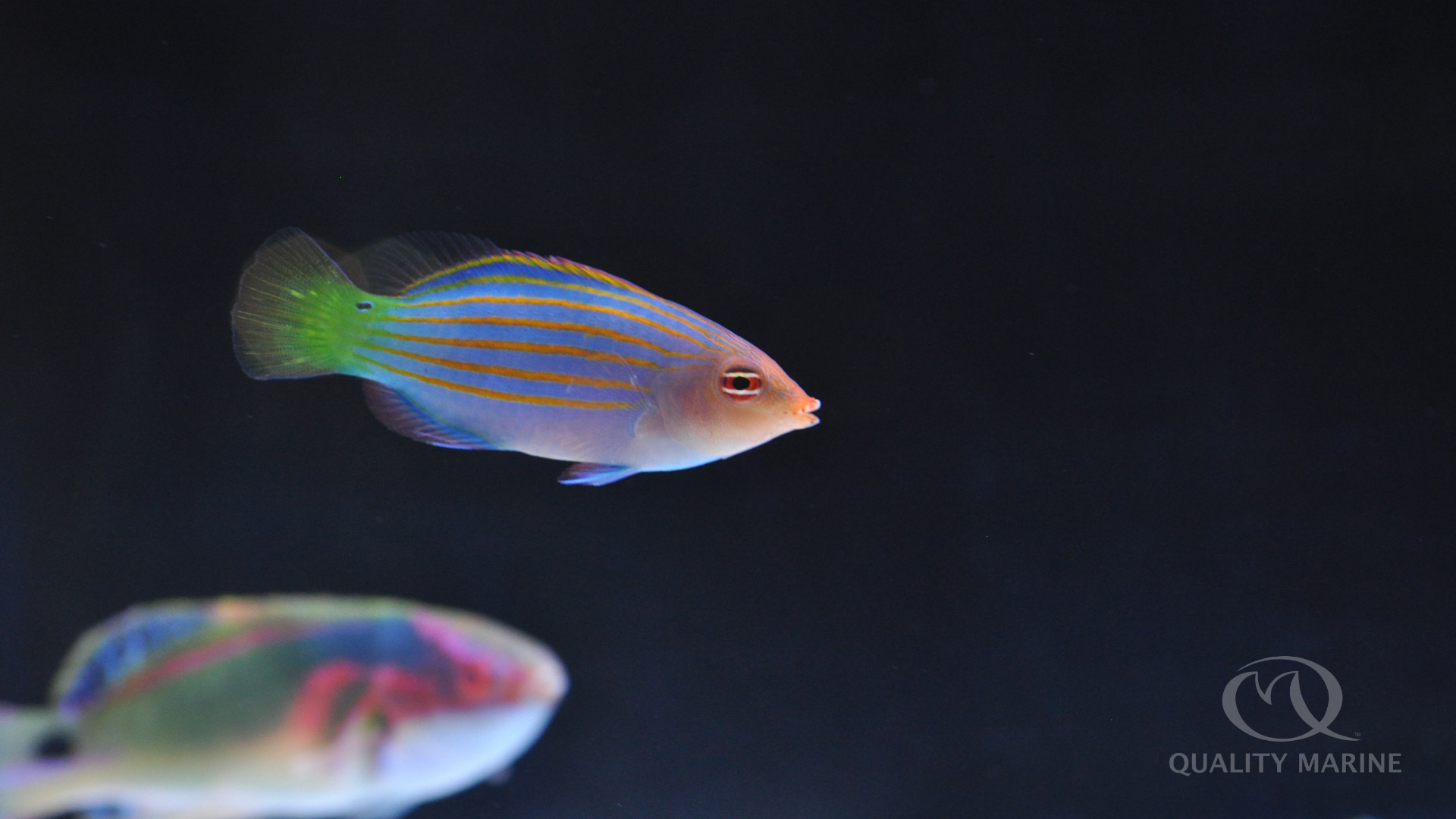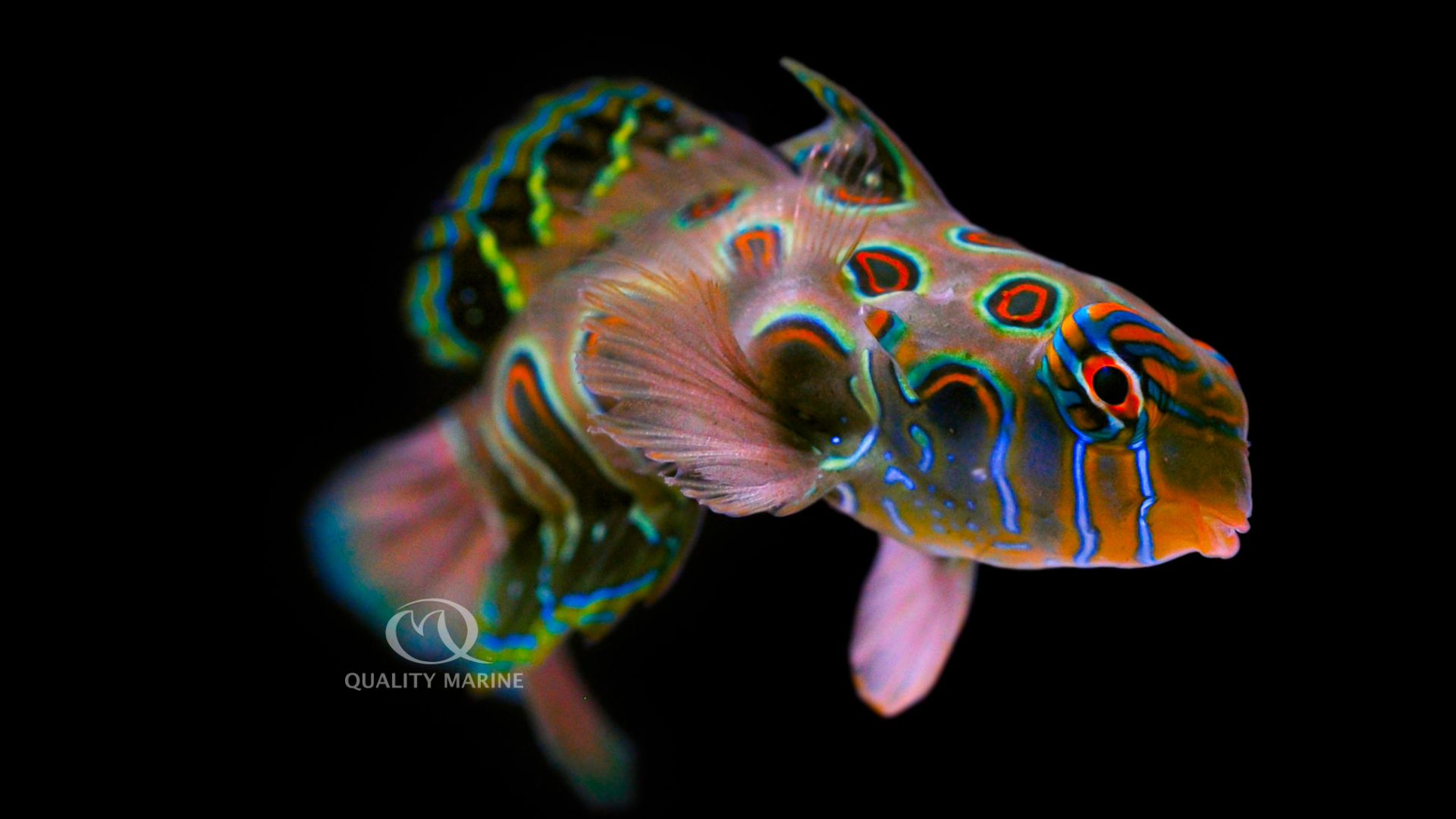A Jar of Fish?

As nano reef aquariums grow in popularity people will always be seeking out new and interesting ways to stock them. Nano reef aquariums are generally defined as aquariums less than thirty gallons in volume, but these rules are not hard and fast. On the lower end, jar reef aquariums should have volumes up to five gallons, which should be considered an absolute minimum volume for fish, and really to only be attempted by those who have reasonable experience in the reefing hobby. In this article we will dive into some hardy, sustainable choices and why they work for the smallest of aquariums in our hobby.

Clownfish (Amphiprion percula or A. ocellaris): This answer may seem too easy, but these fish are hardy, readily available as a sustainable aquacultured species, and don’t generally explore large areas like tangs that are constantly in movement. Instead, they will likely choose an anemone or coral to host in and stay close! Clownfish now come in a wide variety of different color “morphs” through aquaculture and there’s something for everyone’s taste. Clownfish naturally form pairs, spawn quite easily in the home aquarium and its fairly easy to form a pair! All clownfish are proto-androus hermaphrodites, and so small clownfish that have never been isolated on their own are almost always males. Unite two clownfish with a fairly large difference in size and a pair is almost certain to form. Clownfish are entirely reef safe to invertebrates and corals, and young pair can easily be housed in a ten-gallon aquarium. Over time, some clownfish can reach exceptional sizes up to and (very infrequently) slightly exceeding four inches, so larger accommodations or rehoming may be necessary at some point.

Royal Gramma (Gramma loreto): These frequently aquacultured fish from the Caribbean are gorgeously colored and only get a couple inches long. They like to stick close to home (usually a cave, or protected overhang for them to hide under), and because they don’t move around too much, they're ideal for smaller aquariums. Royal Grammas are reef safe and will not bother corals or invertebrates such as shrimp or cleanup crews. They are not only hardy in the aquarium, but also a very sustainable choice both aquacultured and fish from our Short Supply Chains SSC. They can be acquired at a very small size allowing them to be housed in smaller settings longer. Eventually Royal Grammas will reach two to three inches and are a popular choice for other aquarists with a larger tank or can be kept in an established reef tank of at least ten gallons.

Banggai Cardinalfish (Pterapogon kauderni): While not the smallest cardinalfish available in the trade, aquacultured Banggai Cardinals are nearly always readily available. They are hardy, adaptable, and sustainable. Another fish that will readily reproduce in the aquarium, cardinalfish live in groups with distinct pairing occurring during spawning. Males will carry the eggs in their mouth until the babies are essentially mini adults, ready to take smaller aquarium foods. In larger displays small groups of these fish can be housed with Long Spine Urchins simulating how they live in the wild with younger fish living in the refuge of the venomous spines. Again, these fish associate with a location or structure such as a cave, anemone, (or a sea urchin) that keeps them rather sedentary vs being an active reef explorer, which is a benefit to the nano reef aquarist. While a group of these wouldn’t work in a five-gallon aquarium, a small group of up to five fish might be possible in a thirty-gallon aquarium. Single or paired cardinalfish do well in tanks as small as ten gallons, Other, more diminutive, species of Cardinal such as the Orange Lined or Yellow Striped Cardinalfish (Ostorhinchus cyanosoma) would also make for a showy, peaceful inhabitant for any nano reef!

Gobies (Family Gobiidae): We didn’t list a species here because there are just so many options in this family. For very small habitats, and advanced aquarists with established systems there are some gobies that are truly micro fish. Rarely available but highly interesting is the genus Eviota which are diminutive at their biggest, and reef associated in nature so the transition should be an easy one. Quality Marine stocks a couple aquacultured ones as well! Catalina Gobies are the right size, and enjoy cooler temperatures so keep this in mind before choosing one as that might be harder to maintain in small volumes of water. There are some larger options as well, such as Yasha Gobies (Stonogobiops yasha) which reach less than two inches and are readily available aquacultured in addition to being stunning. These are a great choice for aquarists with a habitat volume of at least ten gallons, and perhaps smaller for the advanced aquarist. Having a sand bed will help, as these gobies like to dig burrows and substrate with stable rockwork will make the habitat a safe home for them and allow you to fully appreciate their natural behaviors.
Now that we have talked about a few good options for nano reefs, lets discuss a few fish that might seem like good options, but generally are not.

Wrasses (Family Labridae): Wrasses are great reef dwellers. Some options include smaller fish that even vigorously scour your reef for things like red bug flatworms that will eat your acropora and the bristle worms that everyone seems to hate. Wrasses are also very active fishes and prone to fast movements that might cause them to injure themselves or jump out of nano aquariums. On the larger end of this spectrum, choices like Possum Wrasses or smaller Psuedocheilinus sp. genus species (such as the Six Line Wrasse – Pseudocheilinus hexataenia) would probably work. Make sure that the reef is established with micofauna for them to graze on, and to use a tightly fitting lid to cover the habitat.

Dragonets or Mandarins (Family Callionymidae): These stunningly beautiful fish do move slowly, and are bottom dwelling, reef safe fish – BUT they need a lot of established rock work and most likely supplementation of other live foods to truly thrive. In the small volumes of water, we are working with in this discussion, and the associated small amount of rock to graze on, Callonionymidae should usually be left for bigger tanks. The exception here is that for those of you who are raising your own live foods, or have unlimited access to such, Dragonets could be easily found, and target fed in a smaller aquarium. This would obviously be a scenario for the most advanced of aquarists.
As always, observing animals for changes in their composition or behavior will allow you to know when you are doing a good job with the husbandry, or when something might need to change. Stocking aquariums under ten gallons in volume should be considered a task suitable for only more advanced saltwater aquarists, and one that should be done sparingly, and carefully.
Many people are dissuaded from purchasing larger fish because they have no real plan for where they should go when they outgrow the current aquarium. All the fish listed above are high demand species that can fit into 90% of reef or saltwater aquariums so even if they are only a temporary resident in your nano reef, finding a suitable, caring home for them should never pose a real issue. Head down to your local fish store, they are sure to have some sustainably sourced options in these categories to choose from Quality Marine today!